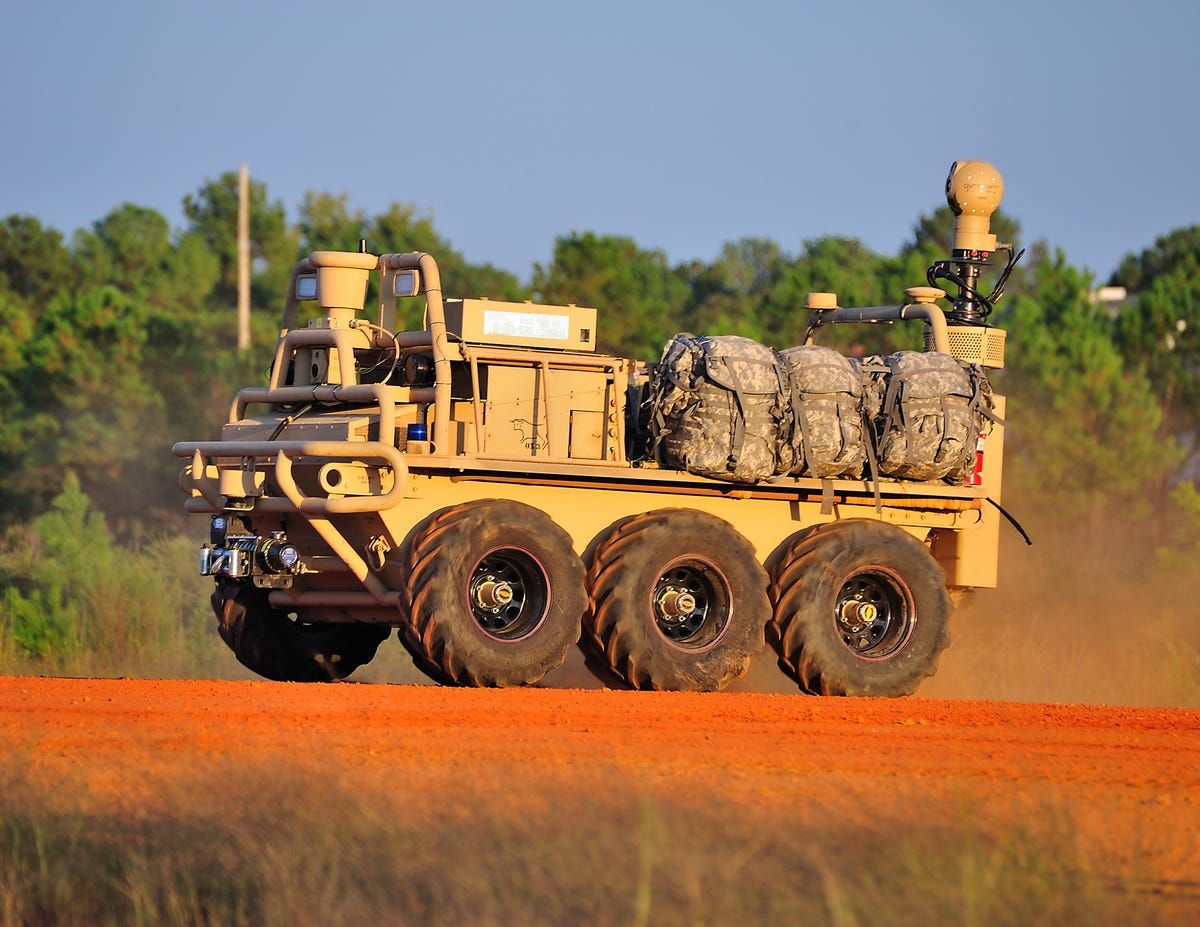How robots can help soldiers haul their heavy gear (pictures)
Lockheed's Squad Mission Support System is a prototype designed to assist combat units by autonomously hauling their gear. That's useful since the average soldier carries 130 pounds of gear.

SMSS hauling gear
GRAND PRAIRIE, Texas -- One of the biggest issues facing U.S. military combat units is that individual soldiers or Marines carry, on average, 130 pounds of gear. Though they are usually fit and strong, that load can wear them down.
Though it's very early in the game, the military is considering ways to take some of that weight off their shoulders, and one option is an autonomous ground vehicle system capable of carrying much of the non-essential gear soldiers and Marines take with them into the field.
Several companies are vying for a potential military contract, and as part of Road Trip 2014, CNET reporter Daniel Terdiman visited Lockheed Martin's Missiles and Fire Control offices here for a demonstration of that company's Squad Mission Support System (SMSS). Read his story here.
SMSS on dirt
Lockheed's SMSS was designed to be able to navigate nearly any kind of terrain. One example is dirt. The vehicles can be remote controlled from nearby, can be be programmed to run autonomously, or can be controlled from hundreds of miles away by satellite.
SMSS on rocks
At Lockheed's robotics facility in Grand Prairie, Tex., near Dallas, the SMSS easily climbs over a pile of rocks, demonstrating its prowess on multiple types of terrain.
SMSS raking
Although the military hasn't issued a contract for an autonomous ground vehicle like the SMSS, it's clear that among many things that will be required if, and when, it does, will be the ability for the vehicles to rake the ground for potential land mines or other explosives. Though the machines may be destroyed or damaged by such weapons, no soldiers or Marines would be harmed.
Following while walking
Another capability Lockheed has built into the SMSS is for the vehicle to autonomously follow an individual. Once set to do so, it can distinguish between multiple people, and will continue to follow the person it's supposed to. Here, an SMSS drives a short distance behind a Lockheed employee as he walks across a field at the company's robotics facility in Grand Prairie, Tex.
Following while running
The SMSS has no problem keeping up with the person it's supposed to be following when he's running.
SMSS with cameras and SATCOM
This version of the SMSS has been outfitted with a gyro-cam and satellite equipment that allows it be controlled by personnel far away from the field. Lockheed recently conducted a test of this system in Michigan, and plans to do another test at Fort Benning in Georgia in August.
Loading the SMSS
The SMSS was designed to fit on a small military aircraft for transportation into the field. Here, an SMSS is loaded onto a military helicopter.
Following while going over rocks
The SMSS doesn't care if the person it's following goes over rocks.
Driving the SMSS
A Lockheed technician drives the SMSS using an off-the-shelf remote control system.
Ox logo
Because of its ability to haul large amounts of gear, the SMSS is nicknamed the "Ox."
SMSS in camouflage
At Lockheed's robotics facility, it has three SMSS', including this one, painted in camouflage.

